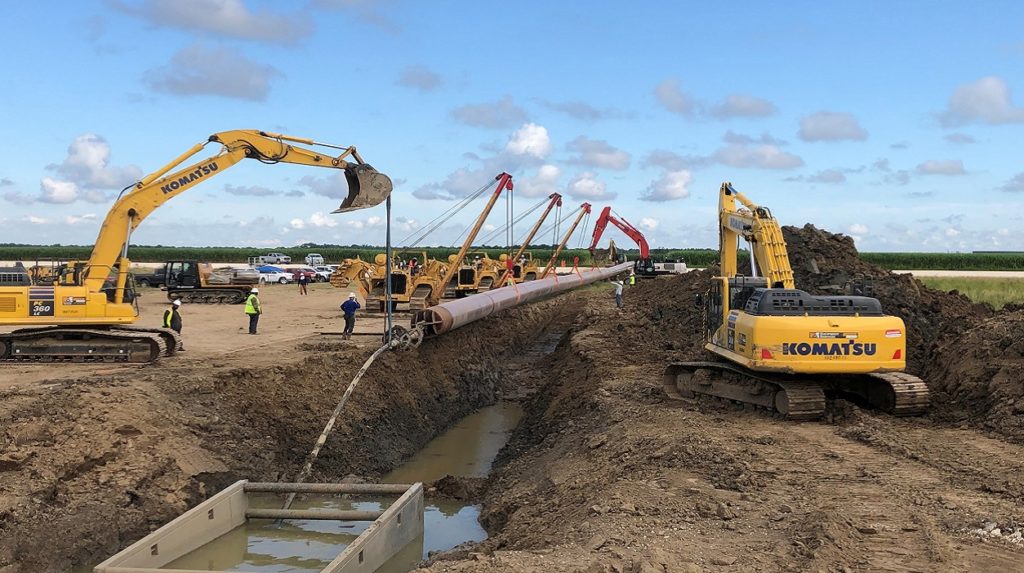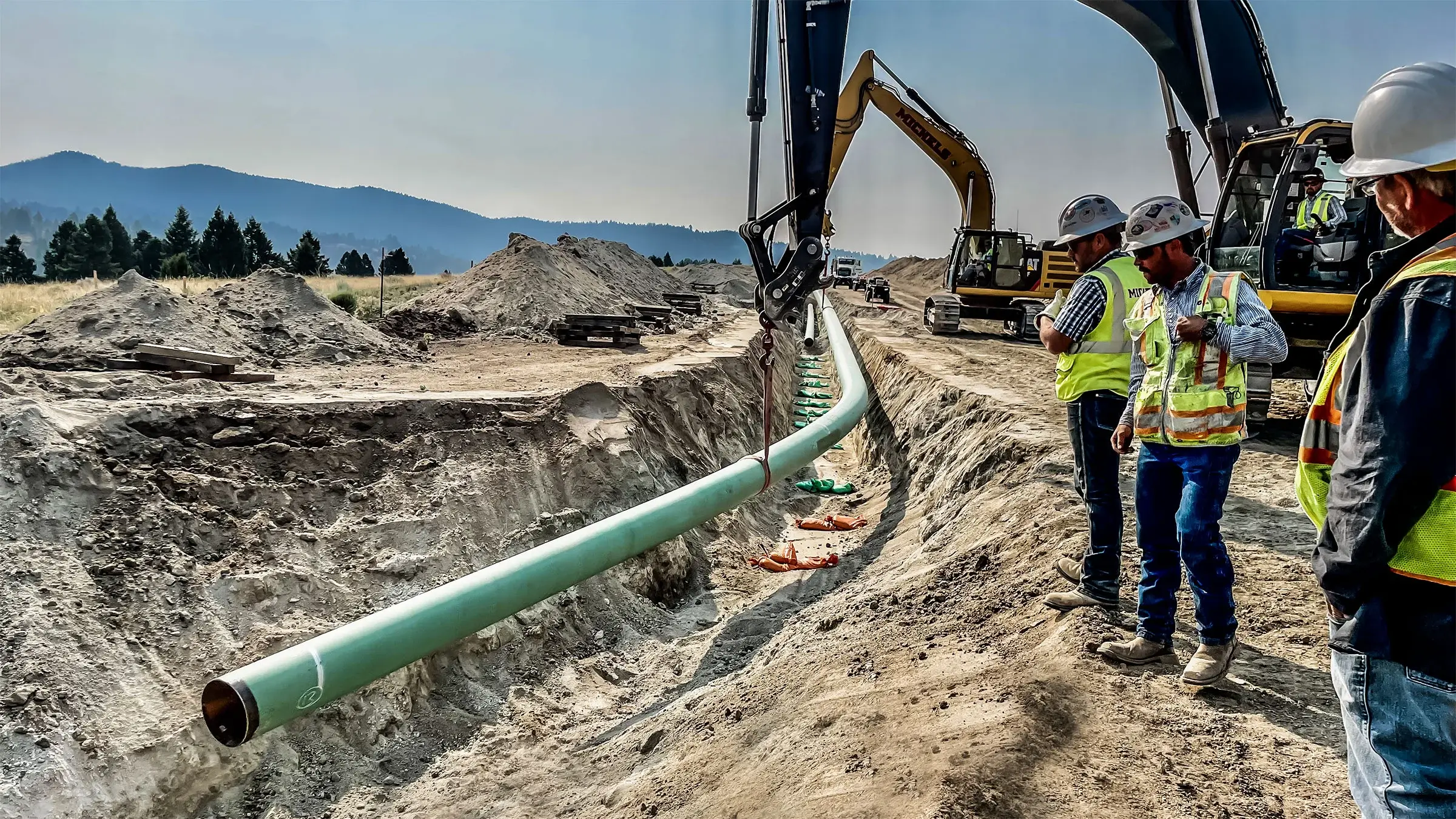Common Questions Answered About Working With Creek Pipe Company
A Deep Dive Into Pipes Installation: Crucial Elements and Factors To Consider for Effective Projects
Effective pipe installation is an important element of engineering tasks. It entails a variety of variables, from product selection to exact sizing and layout. Each decision can significantly affect the system's efficiency and longevity. Understanding these components is crucial for preventing costly errors. Creek Pipe pipeline construction. As teams navigate through the intricacies of installation, numerous key factors to consider emerge that warrant focus. What are the essential elements that can make or damage a piping job?
Understanding Pipe Materials and Their Applications
When picking pipe materials, one should consider the specific applications and environmental conditions they will face. Different materials use unique residential or commercial properties that satisfy various requirements. For example, PVC is light-weight and resistant to corrosion, making it perfect for water distribution systems. Conversely, steel pipes offer toughness and toughness, suitable for high-pressure applications but may need safety finishes to avoid rust.Copper pipes are favored for plumbing as a result of their antimicrobial residential or commercial properties and ease of installation, while polyethylene is frequently utilized in underground applications because of its flexibility and resistance to cracking.The selection of product also rests on temperature level extremes, chemical direct exposure, and installation area. For high-temperature applications, products like CPVC or PEX can be useful. Eventually, comprehending the qualities and restrictions of each product aids in making notified choices that improve system effectiveness and durability.
Value of Proper Sizing and Layout
Correct sizing and style of pipes are important for making sure optimal flow rates and minimizing pressure loss. These elements also play a significant role in determining the compatibility of materials made use of in the installation. A methodical strategy to sizing and style can greatly enhance the performance and longevity of a piping system.
Effect On Circulation Rates
Circulation rates in piping systems are seriously affected by the sizing and layout of the pipelines. Appropriately sized pipes ensure that the liquid can relocate effectively, decreasing disturbance and making the most of circulation capacity. Extra-large pipes can result in minimized flow speeds, while small pipes may limit flow, causing increased rubbing and potential obstructions. The design has to also consider elements such as pipe material, inner surface area level of smoothness, and layout, as these add to the general efficiency of fluid transport. In addition, the arrangement of installations and connections within the system can influence circulation prices. Meticulous interest to pipe sizing and design is necessary for maximizing circulation performance in any type of piping installation project.
Stress Loss Factors To Consider

Just how can push loss greatly affect the efficiency of a piping system? Pressure loss is a crucial element that can considerably diminish the performance of fluid transport systems. When pipelines are incorrectly sized or created, too much stress loss might occur, leading to lowered flow prices and increased power intake. This ineffectiveness can cause higher functional expenses and prospective system failures. Proper sizing and design are vital to minimize stress loss, guaranteeing that liquid characteristics stay excellent throughout the system. Designers need to carefully think about aspects such as pipe size, size, and material to accomplish an efficient balance. Ultimately, attending to pressure loss during the layout stage can enhance dependability and longevity, making it crucial for effective piping jobs.
Material Compatibility Elements
Stress loss is not the only element that can influence the efficiency of a piping system; product compatibility also plays a considerable role in general efficiency. Making sure that the products utilized in a piping system are suitable with the liquids they will certainly move is important. Different materials can respond detrimentally to numerous chemicals, causing corrosion, deterioration, or contamination. This can ultimately jeopardize the integrity of the system and impact its long life. In addition, appropriate sizing and style are necessary to suit thermal growth and contraction, which can further influence material performance. Reviewing aspects such as temperature level, stress, and chemical make-up is vital in selecting ideal materials, therefore boosting system dependability and decreasing maintenance prices in the long-term.
Methods for Accurate Pipe Installation
Precise pipe installation is important for assuring system performance and durability. Numerous techniques can enhance the precision of this process. First, mindful dimension is important; installers need to utilize top quality devices such as laser levels and tape steps to identify the precise sizes and angles needed. Next, proper pipe reducing strategies, like using a pipeline cutter as opposed to a hacksaw, guarantee clean sides that assist in better links. In addition, making use of placement devices, such as pipe jigs, can notably boost accuracy throughout setting up. It is additionally recommended to take into consideration thermal development; enabling for ample spacing and expansion joints can protect against future misalignments. Ultimately, the installation group ought to adhere to manufacturer standards to abide by certain recommendations associated with each pipe kind. By implementing these strategies, the chance of leakages and system failures lowers, inevitably contributing to a more reliable piping system.
Making Sure Pipe Positioning and Support
Correct placement and assistance are vital to the stability and performance of any kind of piping system. Misalignment can result in enhanced stress on joints, prospective leaks, and minimized performance. To ensure correct alignment, it is necessary to make use of proper tools such as laser degrees and alignment gauges. These tools help attain exact positioning, assuring that pipelines are set up according to style specifications.Support systems have to be created to accommodate thermal growth and contraction, in addition to the weight of the pipes and their components. Picking the right kind of supports, hangers, and braces is critical. Each ought to be mounted at specified intervals to avoid drooping or undue stress on the pipes. Routine evaluations adhering to installation can help recognize any imbalances or indications of insufficient assistance. By focusing on alignment and support, one can considerably improve the longevity and functionality of the piping system.
Usual Installation Errors to Avoid

Checking and Evaluation for Quality Control
Although the installation procedure may appear total, thorough screening and inspection are essential to making certain the long-term integrity of a piping system. Numerous methods are employed to evaluate the honesty of the installation, including pressure tests, visual evaluations, and non-destructive testing (NDT) techniques. Pressure tests validate that the system can withstand functional problems without leaks, while visual evaluations help identify any visible defects in the pipes or joints. NDT methods, such as ultrasonic or radiographic screening, give insights into the material integrity without endangering the system.Additionally, recording the testing results is important for future her response recommendation and compliance with sector standards. This paperwork serves not just as a high quality guarantee measure yet also as a legal protect. Inevitably, an extensive screening and assessment method adds to the general safety and efficiency of the piping system, guaranteeing it meets the required efficiency standards with time.
Upkeep Tips for Lasting Pipe Solutions
Keeping a pipeline system calls for routine evaluations and keeping an eye on to identify potential concerns prior to they intensify. Carrying out effective cleaning techniques is also crucial for avoiding build-up that can prevent performance. Together, these practices add to the long life and integrity of the piping infrastructure.
Normal Assessments and Monitoring
Normal examinations and monitoring are crucial for making certain the longevity and effectiveness of pipe systems. Routine evaluations can assist recognize possible concerns such as leaks, rust, or obstructions prior to they intensify right into substantial issues. Carrying out a schedule for routine examinations enables the very early discovery of deterioration, making it possible have a peek at this site for timely repairs. Monitoring stress degrees and flow prices can likewise offer important understandings into system efficiency, ensuring that any abnormalities are dealt with immediately. Furthermore, using sophisticated modern technologies, such as infrared video cameras or ultrasonic screening, can improve the inspection procedure by offering comprehensive information regarding pipe problems. Ultimately, constant tracking and evaluations add to the dependability and toughness of pipe systems, minimizing the threat of expensive fixings and downtime.

Effective Cleansing Methods
Efficient cleaning methods are necessary for maintaining the integrity and functionality of pipe systems. Consistently arranged upkeep, such as flushing systems with water, assists get rid of particles and accumulation. For even more persistent clogs, experts often recommend hydro jetting, which makes use of high-pressure water to clean pipe insides completely. Chemical cleansers can additionally be made use of however should be picked carefully to stay clear of destructive pipes. In addition, using tools like pipe video cameras can aid in identifying problem locations and making certain effective cleaning. Preserving proper water drainage and preventing the disposal of dangerous compounds down pipes better add to longevity. On the whole, regular cleansing techniques not just enhance performance but likewise decrease the danger of costly repair services in the future.
Regularly Asked Concerns
What Are the Labor Expenses Linked With Pipe Installation Projects?
Labor costs for pipe installation projects vary extensively, affected by factors like job intricacy, regional wage rates, and needed skills (Creek Pipe near me). Generally, these prices can vary from $50 to $100 per hour, depending upon the workforce involved
Exactly How Do Local Rules Affect Pipe Installation Practices?
Neighborhood guidelines greatly influence pipe installation methods by establishing safety criteria, material specifications, and installation techniques. Conformity with these regulations assurances job safety and security, environmental management, and adherence to local codes, ultimately impacting general task success and prices.
What Devices Are Vital for Pipe Installation?
Vital tools for pipe installation include pipe wrenches, cutters, and fittings. Furthermore, sealers, determining tapes, and levels guarantee accuracy and sturdiness. Appropriate equipment promotes efficiency and adherence to safety requirements throughout the installation process.
Just How Can Weather Condition Conditions Influence the Installation Process?
Climate problems greatly affect the installation process, as extreme temperatures, rain, or wind can influence product honesty, employee security, and task timelines. Proper preparation and organizing are crucial to reduce these possible obstacles throughout installation.
Are There Guarantees for Installed Pipe Equipments?
Guarantees for installed pipe systems frequently vary by supplier and installation service provider. Normally, they cover flaws and handiwork for a given duration, ensuring the system's integrity and supplying comfort to the homeowner.